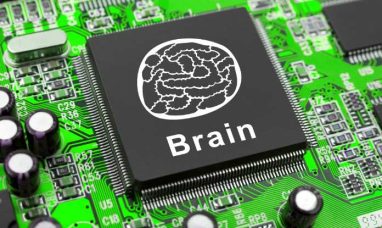ABBVIE-Migraine-Data
– New data from Phase 3 ADVANCE trial evaluating investigational medicine atogepant for the preventive treatment of migraine accepted for oral presentation
– Presentation of real-world evidence assessing safety, tolerability, and potential benefits of treatment with BOTOX® (onabotulinumtoxinA) in combination with calcitonin gene-related peptide (CGRP) monoclonal antibodies (mAbs) for chronic migraine prevention
– Oral presentation of Phase 3 data measuring the efficacy and safety of UBRELVY® (ubrogepant) for the acute treatment of migraine with mild pain
– Research efforts highlighted at MTIS demonstrate AbbVie’s commitment to providing multiple treatment options for the acute and preventive treatment of migraine
– Migraine is a complex, chronic disease with episodic attacks that are often incapacitating and characterized by headache pain as well as neurologic and autonomic symptoms[1]
PR Newswire
NORTH CHICAGO, Ill., Oct. 2, 2020
NORTH CHICAGO, Ill.
,
Oct. 2, 2020
/PRNewswire/ — AbbVie (NYSE: ABBV) today announced it will present results from several clinical trials, including new data from the Phase 3 ADVANCE trial, evaluating the efficacy and safety of the investigational medicine atogepant, an orally administered calcitonin gene-related peptide (CGRP) receptor antagonist (gepant), for the prevention of migraine, at the 2020 Virtual Migraine Trust International Symposium (MTIS),
October 3-9
. In total, 15 abstracts will be presented evaluating the safety, efficacy, and impact on patients and the healthcare system of AbbVie’s migraine treatment portfolio, including BOTOX® (onabotulinumtoxinA) and UBRELVY® (ubrogepant).
Migraine is a complex, chronic disease with episodic attacks that are often incapacitating and characterized by headache pain as well as neurologic and autonomic symptoms.
2
It is highly prevalent, affecting more than 1 billion people worldwide, and is one of the highest causes of disability worldwide for people under 50 years of age.
3,4
Daily activities, work, school, and personal relationships can be negatively affected by migraine, leading to a significant burden on the person with migraine, their family, and friends, and often extending to employers and healthcare systems.
“Migraine attacks can be unpredictable, and the frequency and severity of these attacks often fluctuate, making it very challenging for people with migraine to manage their symptoms,”
Michael Gold
, MD, vice president, neuroscience development, AbbVie. “The clinical trial results and real-world data being presented at MTIS demonstrate our efforts working with scientists and healthcare professionals from around the world to research potential solutions for people with migraine to either treat or prevent their migraine attacks.”
Studies Evaluating Atogepant
Data from three abstracts will be presented, including new results from the Phase 3 ADVANCE trial, which evaluated the safety and efficacy of atogepant for the preventive treatment of migraine. The data will be presented at an oral session on
Wednesday, October 7
, at
12:25 p.m. EDT
/
5:25 BST
.
The topline results from the ADVANCE trial were announced in a
press release
issued in
July 2020
, and additional data from this trial will be presented at upcoming medical congresses.
Additionally, two Phase 1 trials assessing the potential drug-to-drug interactions of atogepant combined with sumatriptan, a serotonin receptor antagonist that is commonly used as an acute treatment of migraine in the U.S., and atogepant in combination with acetaminophen or naproxen, two commonly-used pain relievers, will be presented as posters, available on demand
October 3-9
.
Studies Evaluating BOTOX
®
(onabotulinumtoxinA)
Findings from nine abstracts evaluating treatment with BOTOX
®
in clinical and real-world settings will be presented as posters, also available on demand
October 3-9
.
Notably, these presentations include a real-world data analysis of the safety and tolerability of adding
calcitonin gene–related peptide (CGRP) monoclonal antibodies (mAbs) to BOTOX
®
for the treatment of chronic migraine, real-world evidence from the PREDICT study evaluating the impact of BOTOX
®
treatment on healthcare resource utilization and health-related quality of life in patients with chronic migraine, and a 29-year retrospective analysis evaluating pregnancy outcomes in women exposed to BOTOX
®
, including more than 30 percent of women with migraine.
Studies Evaluating UBRELVY® (ubrogepant)
Three abstracts evaluating UBRELVY®, which is currently approved in the U.S. for the acute treatment of migraine with or without aura in adults, demonstrating efficacy in treating migraine with moderate-to-severe pain,
5
will be presented. These include an oral presentation of results from the Phase 3 trial evaluating the safety and efficacy of UBRELVY® for acute treatment of migraine when pain is mild on
Wednesday, October 7
, at
12:05 p.m. EDT
/
5:05 BST
.
Additionally, results from an analysis of the ACHIEVE I and II trials, which evaluated the impact of concomitant preventive medication use on the efficacy and safety of URBRELVY for the acute treatment of migraine, will be presented as a poster, available on demand
October 3-9
.
About AbbVie Leadership in Migraine
AbbVie, a leader in the migraine space, markets BOTOX
®
(onabotulinumtoxinA), the first FDA-approved, preventive treatment for adults with Chronic Migraine and UBRELVY
®
(ubrogepant), the first FDA-approved oral calcitonin gene-related peptide (CGRP) receptor antagonist (gepant), which is indicated for the acute treatment of migraine with or without aura in adults.
About Atogepant
Atogepant is an investigational orally administered, CGRP receptor antagonist (gepant) specifically developed for the preventive treatment of migraine. CGRP and its receptors are expressed in regions of the nervous system associated with migraine pathophysiology. Studies have shown that CGRP levels are elevated during migraine attacks and selective CGRP receptor antagonists confer clinical benefit in migraine.
BOTOX® Indications
BOTOX® is a prescription medicine that is injected to prevent headaches in adults with chronic migraine who have 15 or more days each month with headache lasting 4 or more hours each day in people 18 years or older.
It is not known whether BOTOX® is safe or effective to prevent headaches in patients with migraine who have 14 or fewer headache days each month (episodic migraine).
IMPORTANT SAFETY INFORMATION
BOTOX® may cause serious side effects that can be life threatening. Ge
t
medical help right away if you have any of these problems any time (hours to weeks) after injection of BOTOX®:
-
Problems swallowing, speaking, or breathing,
due to weakening of associated muscles, can be severe and result in loss of life. You are at the highest risk if these problems are pre-existing before injection. Swallowing problems may last for several months -
Spread of toxin effects.
The effect of botulinum toxin may affect areas away from the injection site and cause serious symptoms including: loss of strength and all-over muscle weakness, double vision, blurred vision and drooping eyelids, hoarseness or change or loss of voice, trouble saying words clearly, loss of bladder control, trouble breathing, and trouble swallowing
There has not been a confirmed serious case of spread of toxin effect away from the injection site when BOTOX
®
has been used at the recommended dose to treat chronic migraine.
BOTOX® may cause loss of strength or general muscle weakness, vision problems, or dizziness within hours to weeks of taking BOTOX®.
If this happens, do not drive a car, operate machinery, or do other dangerous activities.
Do not receive BOTOX® if you:
are allergic to any of the ingredients in BOTOX® (see Medication Guide for ingredients); had an allergic reaction to any other botulinum toxin product such as Myobloc® (rimabotulinumtoxinB), Dysport® (abobotulinumtoxinA), or Xeomin® (incobotulinumtoxinA); have a skin infection at the planned injection site.
The dose of BOTOX® is not the same as, or comparable to, any other botulinum toxin product.
Serious and/or immediate allergic reactions have been reported,
including itching, rash, red itchy welts, wheezing, asthma symptoms, or dizziness or feeling faint. Get medical help right away if you experience symptoms; further injection of BOTOX® should be discontinued.
Tell your doctor about all your muscle or nerve conditions
such as ALS or
Lou Gehrig’s
disease, myasthenia gravis, or Lambert-Eaton syndrome, as you may be at increased risk of serious side effects including difficulty swallowing and difficulty breathing from typical doses of BOTOX®.
Tell your doctor about all your medical conditions, including if you:
have or have had bleeding problems; have plans to have surgery; had surgery on your face; weakness of forehead muscles; trouble raising your eyebrows; drooping eyelids; any other abnormal facial change; are pregnant or plan to become pregnant (it is not known if BOTOX® can harm your unborn baby); are breastfeeding or plan to breastfeed (it is not known if BOTOX® passes into breast milk).
Tell your doctor about all the medicines you take,
including prescription and over-the-counter medicines, vitamins, and herbal supplements. Using BOTOX® with certain other medicines may cause serious side effects.
Do not start any new medicines until you have told your doctor that you have received BOTOX® in the past.
Tell your doctor if you have received any other botulinum toxin product in the last 4 months; have received injections of botulinum toxin such as Myobloc®, Dysport®, or Xeomin® in the past (tell your doctor exactly which product you received); have recently received an antibiotic injection; take muscle relaxants; take allergy or cold medicines; take sleep medicine; take aspirin-like products or blood thinners.
Other side effects of BOTOX® include:
dry mouth, discomfort or pain at injection site, tiredness, headache, neck pain, eye problems: double vision, blurred vision, decreased eyesight, drooping eyelids, swelling of your eyelids, dry eyes; drooping eyebrows.
For more information refer to the Medication Guide or talk with your doctor.
You are encouraged to report negative side effects of prescription drugs to the FDA. Visit
www.fda.gov/medwatch
or call 1-800-FDA-1088.
Please see BOTOX® full
Prescribing Information
, including Boxed Warning and
Medication Guide
.
IMPORTANT SAFETY INFORMATION
Who should not take UBRELVY® (ubrogepant)?
Do not take UBRELVY® if you are taking medicines known as strong CYP3A4 inhibitors, such as ketoconazole, clarithromycin, itraconazole.
What should I tell my healthcare provider before taking UBRELVY®?
Tell your healthcare provider about all your medical conditions, including if you:
- Have liver problems
- Have kidney problems
- Are pregnant or plan to become pregnant
- Are breastfeeding or plan to breastfeed
Tell your healthcare provider about all the medicines you take,
including prescription and over-the-counter medicines, vitamins, and herbal supplements. Your healthcare provider can tell you if it is safe to take UBRELVY® with other medicines.
What are the most common side effects of UBRELVY®?
The most common side effects are nausea (4%) and sleepiness (3%). These are not all of the possible side effects of UBRELVY®.
What is UBRELVY® (ubrogepant)?
UBRELVY® is a prescription medicine used for the acute treatment of migraine attacks with or without aura in adults. UBRELVY® is not used to prevent migraine headaches.
Please see full
Prescribing Information
.
About UBRELVY® (ubrogepant)
UBRELVY® (ubrogepant) is a novel, highly potent, orally administered calcitonin gene-related peptide (CGRP) receptor antagonist (gepant) for the acute treatment of migraine with or without aura in adults that is an option for a wide range of patients who experience migraine attacks. Unlike older medications, UBRELVY® is the first pill of its kind to directly block CGRP, a protein released during a migraine attack, from binding to its receptors. It works without constricting blood vessels, which some older treatments are known to do.
About AbbVie in Neuroscience
At AbbVie, our commitment to preserve the personhood of those living with neurological and psychiatric disorders is unwavering. Every challenge in this uncharted territory makes us more determined and drives us harder to discover and deliver solutions for patients, care partners and clinicians. AbbVie’s Neuroscience portfolio consists of approved therapies and a robust pipeline in neurological and psychiatric disorders, including Alzheimer’s disease, bipolar disorder and depression, major depressive disorder, migraine, multiple sclerosis, Parkinson’s disease, spinal cord injuries, post-stroke spasticity, schizophrenia, and stroke.
We have a strong investment in neuroscience research, with our Foundational Neuroscience Center in Cambridge,
Massachusetts
, and our Neuroscience Discovery site in Ludwigshafen, Germany, where our research and resilience in these challenging therapeutic areas is yielding a deeper understanding of the pathophysiology of neurological and psychiatric disorders, and identifying targets for potential disease-modifying therapeutics aimed at making a difference in people’s lives. For more information, please visit
www.abbvie.com
.
About AbbVie
AbbVie’s mission is to discover and deliver innovative medicines that solve serious health issues today and address the medical challenges of tomorrow. We strive to have a remarkable impact on people’s lives across several key therapeutic areas: immunology, oncology, neuroscience, eye care, virology, women’s health and gastroenterology, in addition to products and services across its Allergan Aesthetics portfolio. For more information about AbbVie, please visit us at
www.abbvie.com
. Follow @abbvie on
Twitter
,
Facebook
,
Instagram
,
YouTube
and
LinkedIn
.
Forward-Looking Statements
Some statements in this news release are, or may be considered, forward-looking statements for purposes of the Private Securities Litigation Reform Act of 1995. The words “believe,” “expect,” “anticipate,” “project” and similar expressions, among others, generally identify forward-looking statements. AbbVie cautions that these forward-looking statements are subject to risks and uncertainties that may cause actual results to differ materially from those indicated in the forward-looking statements. Such risks and uncertainties include, but are not limited to, failure to realize the expected benefits from AbbVie’s acquisition of Allergan plc (“Allergan”), failure to promptly and effectively integrate Allergan’s businesses, competition from other products, challenges to intellectual property, difficulties inherent in the research and development process, adverse litigation or government action, changes to laws and regulations applicable to our industry and the impact of public health outbreaks, epidemics or pandemics, such as COVID-19. Additional information about the economic, competitive, governmental, technological and other factors that may affect AbbVie’s operations is set forth in Item 1A, “Risk Factors,” of AbbVie’s 2019 Annual Report on Form 10-K, which has been filed with the Securities and Exchange Commission, as updated by its subsequent Quarterly Reports on Form 10-Q. AbbVie undertakes no obligation to release publicly any revisions to forward-looking statements as a result of subsequent events or developments, except as required by law.
|
|
||
|
|
||
|
|
||
|
|
||
|
|
||
![]()
View original content:
http://www.prnewswire.com/news-releases/abbvie-to-present-new-data-from-15-abstracts-at-the-2020-virtual-migraine-trust-international-symposium-301144590.html
SOURCE AbbVie









